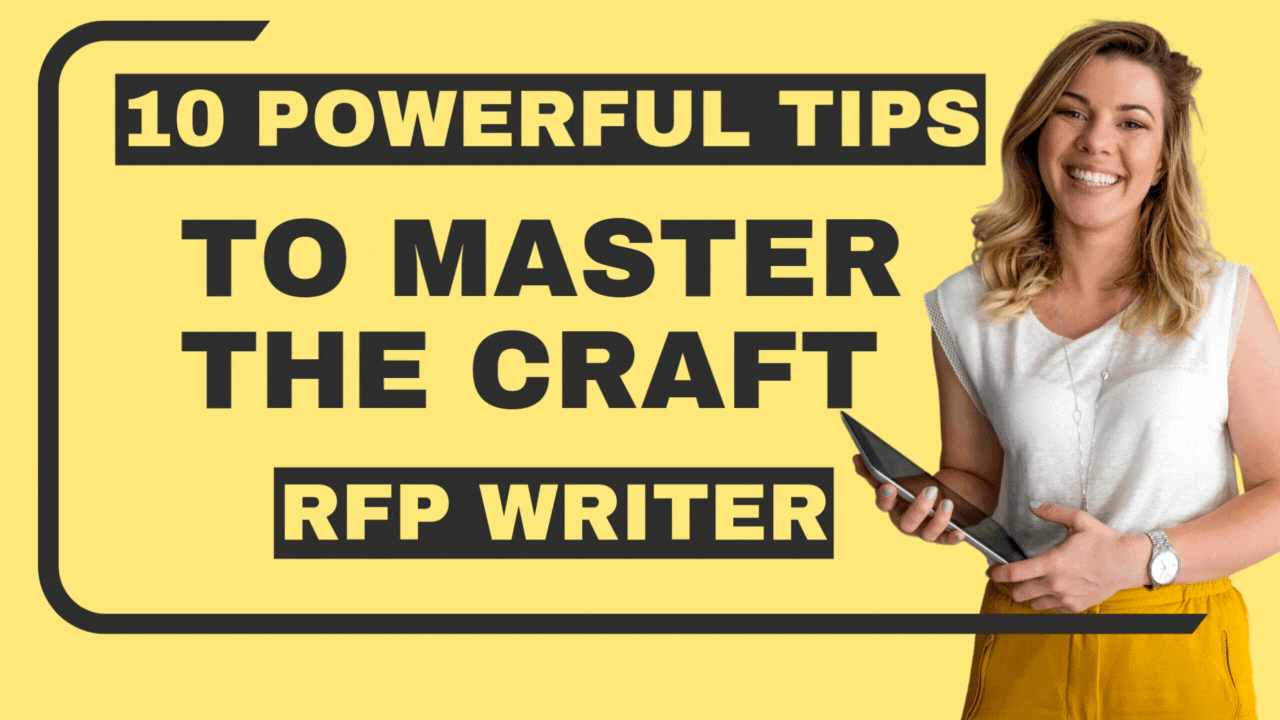RFP Writer: 10 Powerful Tips to Master the Craft
Learn 10 actionable tips to become an expert RFP writer. Whether you're a beginner or advanced, our comprehensive guide will help you craft winning proposals that get results.
Table of Contents
Introduction
In the world of B2B transactions, a well-crafted Request for Proposal (RFP) can make or break the deal. Whether you’re looking to submit an RFP or create one for vendors, the writing process is crucial. The role of an RFP writer goes beyond putting words on paper. It involves research, strategic planning, and the ability to communicate effectively.
In this guide, we will share 10 powerful tips for mastering the art of RFP writing. By the end, you’ll have actionable advice to boost your chances of success whether you’re a seasoned pro or just starting out.

What is an RFP Writer?
An RFP writer is responsible for drafting detailed Request for Proposals (RFPs), which are formal documents that outline the requirements for a specific project or service. The goal of an RFP is to invite vendors or service providers to bid for a project, clearly outlining the project scope, timelines, and expected deliverables.
Writing a compelling RFP requires more than just following a template. A great RFP writer understands how to communicate clearly, engage potential vendors, and provide essential project details without overwhelming the reader.
Why Is RFP Writing Important?
RFP writing is an essential skill for businesses looking to procure services or products. When done right, it enables organizations to attract the best vendors, establish clear expectations, and ensure the success of their projects. If an RFP is vague or unclear, it can lead to misunderstandings, delays, or even poor-quality submissions.
Well-written RFPs help organizations:
- Attract qualified bidders
- Ensure transparency in the procurement process
- Save time by narrowing down candidates early on
- Provide clear instructions that prevent costly misinterpretations
10 Expert Tips to Improve Your RFP Writing Skills
1. Understand Your Audience
Before you begin writing an RFP, it’s important to understand the needs of your audience—vendors, suppliers, or service providers. Tailor the language and structure of your RFP to appeal to their expertise. If you’re requesting a complex IT solution, ensure you’re using industry jargon, but keep it accessible to encourage wide participation.
2. Clearly Define Your Objectives
One of the most critical aspects of writing an RFP is clarity. You must define your project objectives early on, so there is no confusion about what you’re looking for. State the problem you’re trying to solve and the solutions you expect from the vendor. This makes it easier for vendors to tailor their responses, increasing the likelihood that they’ll meet your needs.
3. Create a Detailed Scope of Work
The Scope of Work (SOW) is a crucial part of an RFP. It outlines the tasks, responsibilities, and deliverables expected from the selected vendor. A well-defined SOW should cover every aspect of the project, including timelines, milestones, and criteria for success. Include as much detail as possible to avoid ambiguity.
Example: If you’re issuing an RFP for a website redesign, your SOW might include specific details on design requirements, SEO optimization, user experience (UX) expectations, and the project’s timeline.
4. Set Clear Evaluation Criteria
RFP responses can vary significantly, so it’s important to set up a clear evaluation process. This ensures you are comparing responses objectively and fairly. Specify your evaluation criteria within the RFP, whether it’s based on price, experience, technical expertise, or another factor.
5. Include a Timeline for Submission and Decisions
Time management is crucial in the RFP process. Vendors need enough time to prepare a comprehensive response, but not too much time that it drags the process out unnecessarily. Clearly state the deadlines for submitting questions, final proposals, and any other important milestones.
6. Use a Consistent Format and Structure
Consistency in formatting makes your RFP easier to read and navigate. Divide your document into clear sections like Introduction, Company Overview, Project Objectives, SOW, Proposal Guidelines, Evaluation Criteria, and Contact Information. This logical structure ensures that no essential details are missed.
7. Encourage Vendor Questions
A well-designed RFP should encourage vendors to ask clarifying questions. This allows you to avoid misunderstandings and ensure that all proposals meet your needs. Establish a formal Q&A process within the timeline and ensure that all vendors receive the same information.
8. Provide a Budget Range
Providing a budget range can help filter out vendors who may be either too expensive or too inexperienced for the project. Vendors are more likely to submit accurate proposals when they have a clear understanding of your financial expectations. If a strict budget isn’t feasible, outline a rough estimate or use value-based criteria.
9. Use Templates and Tools for Efficiency
Creating an RFP from scratch can be time-consuming. Using an RFP template can help you save time while ensuring you don’t miss any key components. There are also various RFP management tools that allow you to streamline the process, collect proposals digitally, and track submissions.
10. Review and Edit Thoroughly
Before sending out your RFP, review and edit it thoroughly. Poorly written RFPs with typos or unclear instructions can deter high-quality vendors. It’s worth having a second set of eyes to proofread your RFP to ensure clarity and professionalism.
How to Respond to an RFP: Best Practices for Vendors
Not only is writing an RFP a skill, but so is responding to one. If you’re on the vendor side, here are a few best practices:
Understand the Client’s Needs
Before diving into a proposal, ensure you fully understand what the client is asking for. If anything is unclear, take advantage of the Q&A process.
Customize Your Proposal
Avoid sending a generic response to an RFP. Tailor your proposal to address the specific needs and challenges outlined by the client. Highlight your unique value proposition and demonstrate your expertise.
Follow Submission Guidelines
Every RFP comes with specific submission guidelines. Pay close attention to details like the format, deadlines, and required documents. Failing to follow these guidelines can disqualify you from consideration, regardless of how strong your proposal is.
Take Your RFP Writing to the Next Level
Becoming an expert RFP writer can significantly improve your organization’s ability to attract top-tier vendors and ensure the success of your projects. By applying these tips—such as defining clear objectives, using templates, and encouraging questions—you can make the RFP process smoother and more effective. Remember, a well-crafted RFP not only improves the chances of getting the best proposals but also sets the foundation for a successful partnership.
Whether you’re just starting or are an experienced RFP writer, the key to success is clarity, structure, and strategic planning.
Ready to start writing better RFPs? Download our free RFP template here and get started on your next project!
contact us www.narrativenesthub.com
FAQs
An RFP writer is responsible for creating Request for Proposals that invite vendors to bid on projects. This includes defining project objectives, writing a Scope of Work, and ensuring clarity in the document.
To write an effective RFP, clearly define your project goals, set specific evaluation criteria, include a detailed Scope of Work, and provide a realistic timeline for submission.
Some popular tools for RFP writing include Loopio, RFP360, PandaDoc, and Proposify. These tools streamline the process, making it easier to manage RFPs and track vendor responses.
There’s no strict rule for RFP length, but it should be detailed enough to clearly explain the project requirements without being overwhelming. Typically, RFPs are anywhere from 5-15 pages, depending on the complexity of the project.
The Scope of Work outlines all the tasks, responsibilities, and deliverables expected from the vendor. It helps avoid ambiguity and ensures that both parties have a clear understanding of what the project entails.
For more in-depth information on government procurement and contract writing, you can visit Acquisition.gov—a comprehensive resource for acquisition regulations and guidelines.
Visit Our Website For those seeking assistance with responses, visit www.narrativenesthub.com . Our team offers economical and customized response writing services that align with tenderer specific needs and help you stand out in competitive selections.



Pingback: Best Business Plan Writers: The Ultimate Guide for Entrepreneurs